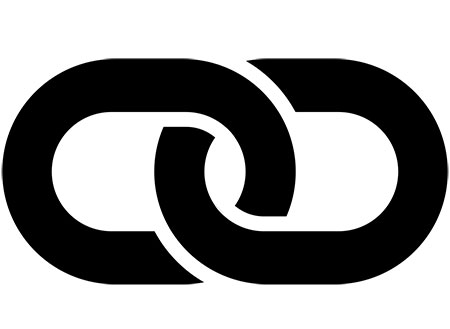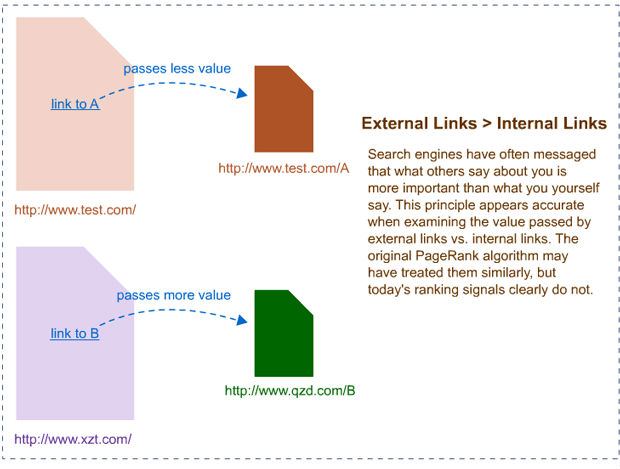 Imagine that you are Google, and you need to determine which web pages to serve up on page 1 of your search results for the search query “laptops”. There literally millions of web pages which are well optimized for “laptops”, so how do you determine how those pages should be ranked? The answer: inbound links (aka. backlinks, external links, external inbound links, or just links. In this article, we will refer to them as inbound links).
Imagine that you are Google, and you need to determine which web pages to serve up on page 1 of your search results for the search query “laptops”. There literally millions of web pages which are well optimized for “laptops”, so how do you determine how those pages should be ranked? The answer: inbound links (aka. backlinks, external links, external inbound links, or just links. In this article, we will refer to them as inbound links).
Accordingly, an SEO must be able to acquire these inbound links for they site the are optimizing in order to be effective. The various methods and tactics that SEOs use to acquire inbound links is most commonly referred to as link building.
Now that you have a grasp on what link building is at a high-level, let’s dig a little deeper.
Jump to:
- What is an inbound link?
- How do SEOs build links?
- Learn how to do it yourself with these link building resources
- Read our link building case study (coming soon)
What is an inbound link?
An inbound link is a hyperlink on a web page which points to a web page on a different website. You likely come across dozens of inbound links on the web every day with out even realizing it.
An inbound (external) link is different from an internal link because it refers to a link that points to a different website. An internal link is a hyperlink which points to a different web page on the same website.

Google and other search engines view these inbound links as a “vote” for the web page that is receiving the inbound link. Accordingly, the more inbound links that a given web page has from other trusted websites, the higher that page will rank for relevant search terms.
How Do SEOs Build Links?
Great link building requires creativity. There is more than one way to build links. Here are some of the most common, popular, and effective tactics that SEOs use to build links in 2015:
Content Marketing for Link Building
Content marketing (specifically web content marketing) is the creation and distribution of relevant and valuable content to attract, acquire, and engage a clearly defined and understood target audience, with the objective of driving profitable customer action.
Consistently creating and promoting website content is the most scalable link building tactic. It is also the most expensive, at least in the short term. Effective content marketing requires expert researchers, copywriters, graphic designers, web developers, and videographers; professionals who specialize in the creation of digital media which provides enormous value to the target audience.
How does content marketing actually help SEOs build links?
There are a slew of ways that content marketing can produce inbound links. Here are a few examples:
Example 1:
You have an eCommerce web site where you sell baseball cards and memorabilia. You publish a comprehensive guide on “the factors which have the greatest impact on the value of a given baseball cards”.
Meanwhile, the author of a baseball blog is writing a post on “The 5 most valuable baseball cards of all time”. She begins her research by scanning her twitter feed, which is full of tweets from baseball journalists and fellow baseball bloggers. She sees a tweet which links to none to your guide to the factors that have the most influence on the value of a baseball card. She clicks the link, and lands on your site.
She is impressed by the piece, and decides to reference a statistic from your guide in her blog post. She adds a hyperlink in the post which links to your guide.
You earned the link because you created relevant and useful content and promoted it to a specific, well understood target audience.
Example 2:
You are a business coach. You’ve been publishing daily posts on your very own entrepreneurship blog for about a year and a half. You have fostered a small but engaged community of readers. Your posts normally get 25-50 social media shares, and a few comments each.
Meanwhile, the organizer of an entrepreneur meetup group in your city is looking for a guest speaker for the next session. She is referred to your blog by one of her twitter followers, and is impressed by your writing and expertise. She shoots you an email and asks if you would be willing to speak at her entrepreneur meetup group. You accept and deliver a great presentation on the potential pitfalls of venture capitalist funding.
The meetup group organizer writes a summary of your presentation on the company blog, and links back to your blog from the post.
You earned the link because you created relevant and useful content and promoted it to a specific, well understood target audience. And the link is just icing on the cake. You have also made new business connections, and you’ve added an item to add to your resume to further bolster your professional credentials, which leads to more business.
Example 3:
You are a DUI lawyer. You create a scholarship contest for young students just entering college, and you publish the details on your website. You will award a $2,000 prize to the winner. In order to be qualified for the scholarship, the student must admit to their drunk driving habit, and compose an essay on the concrete steps they are taking to end the habit.
You reach out to a local news reporter and pitch the story. She loves the angle and agrees to interview you for the local paper, which also has an online version. When the article is published in the paper and online, it is picked up by other local news outlets, along with bloggers in the legal field. You quickly attract dozens of links from relevant and trusted domains, not to mention a large amount of brand exposure and coverage.
You earned the links because you created compelling content and promoted it to a specific, well understood target audience.
As you can see, content marketing can generate inbound links in a variety of ways. Furthermore, the benefits of content marketing can extend far beyond simply acquiring backlinks. If you have the expertise, passion, and budget to do it well, content marketing is an ideal link building strategy.
Outreach for Link Building
In your quest to learn more about the various forms that link building takes, you will encounter the term “outreach” frequently.
Outreach simply refers to the process of “reaching out” to other webmasters (anyone who has a website) and proposing that they link to your site. This proposition can take many forms. In order to be successful at using outreach to build links, the SEO must understand how to create an enticing value proposition for the webmaster from whom he wants a link.
Here are some common value propositions that SEOs use to obtain inbound links through performing outreach:
Guest Authoring
Aka. guest blogging and guest posting. The proposition here is simple: I will create a piece of content for your website (most commonly a blog post on a relevant topic). You get free, relevant, quality content for your site, and I get to place a link from the post back to my site.
Broken Link Replacement
Here, the SEO looks for broken links on the target website, and then contacts the webmaster informing her of the broken links. The SEO then suggests that a link to his website be used to replace the broken link. This tactic relies on the reciprocity principal, which is a powerful means of influencing behavior.
Resource Page Addition
A resource page is a web page that contains links to resources that are relevant to the topic of the site. For example, if I had a baseball blog, I might have a resource page which linked to sites like baseball-reference.com, mlb.com, Twitter accounts for popular baseball journalists, etc. When the SEO finds a resource page on which she wants a link, she’ll have to convince the webmaster that a link to her site would make the resource more valuable.
User Generated Content for Link Building
There are millions of websites where it is possible to add a link to your site by creating user generated content. On these sites links can be dropped in forum signatures, blog comments, and user profiles. While there are ways to create true value and build effective links without having to rely on another webmaster to publish your link, Google tends to devalue these kinds of links, and will even penalize sites who purse this link building method to aggressively or in a spammy way.
Do It Yourself with These Link Building Resources:
External Resources:
- Big-Ass List of Link Building Resources by Paddy Moogan on LinkBuildingBook.com
- Link Building: The Definitive Guide by Brian Dean on BackLinko.com
- Link Building Tactics – The Complete List by Jon Cooper on PointBlankSEO.com
- 5 Link Building Tactics to Improve Your Local Rankings by Matt Green on Moz
- A Different Way to Use HARO to Build Links by Matt Green on MileHighTwaddle.com
Resources from This Site:
- How to Find the Source of Images Online by Frank Scharnell
- How to Build Links by Creating a Scholarship by Matt Green
- The Difference Between Co-citations and Backlinks by Casey Meraz
- Link Outreach Mistakes to Avoid by Matt Green
- Link Building with Auto Emded Image Code by Matt Green
Link Building Case Study
Coming soon!